10 Mitsubishi Lancer Evolution Generations – Here is what we found about Mitsubishi lancer evolution 2008 and 2015
10 Mitsubishi Lancer Evolution Generations :
The Mitsubishi Evolution is not a car—it’s a weapon, one whose roots can be traced back to well before the dawn of the nameplate. In Mitsubishi’s almost ceaseless quest to establish an image for itself, racing has been a priority on several occasions. As far back as 1961, the company was aiming for rally glory with its 500 Super Deluxe, which was developed for racing with its “big” 594-cc, 25-hp, air-cooled, two-cylinder engine. At the 1962 Macau Grand Prix, examples finished first, second, and third (plus fourth) to lock out every other manufacturer from the “Under 750 cc ” class podium. By the early 1970s, Mitsu had developed the Lancer 1600 GSR that took the top spot in 1974’s tough East African Safari Rally. And in 1985, a Mitsubishi Pajero SUV (sold as the Montero in the United States) won the Paris-Dakar Rally.
By then the company was clearly committed to pitching high technology and ruggedness as major selling points for its vehicles worldwide. Short of Formula 1, no racing series was more high tech than world rallying, and nothing came close to the ruggedness of rallying, either. Mitsubishi’s first attempt to build a competitive World Rally Championship entry was the Galant VR-4 that was constructed according to Group A rules. It’s somewhat of an oversimplification to assert that the first Lancer Evolution was a Galant VR-4 shoved under the smaller, lighter, more competitive Lancer’s shell. But only somewhat.
Table of Contents
ToggleA tale of Golden Years
The Evo represented the golden years of the Mitsubishi motors’ performance department from the early 90s to 2007. The first Mitsubishi Lancer Evolution is the flagship sports car model of the brand. These were based on the rally-inspired, turbocharged, all-wheel-drive Lancer sedan. The evolution models that came before the fifth iteration did, in fact, participate in the world rally championship Group A class. The other defining characteristic across the generations was the 4G63 turbocharged engine and all-wheel-drive systems.
Interestingly, the Evo was originally intended for the Japanese market, with limited initial approval from the European and American markets. Each Evo generation has independent appeal, though some offerings performed better than others in aesthetics, horsepower, or handling. The following list shows the ranking of all the Evos we’ve seen throughout the years from the worst to the best.
Ranking 10 of the evolution
10. Evolution I
As per the history, The first Lancer Evolution used the 2.0 L turbocharged DOHC engine and AWD drivetrain from the original Galant VR-4 in a Lancer chassis, and was sold in GSR and RS models. This engine was also used in the Mitsubishi RVR with the Hyper Sports Gear trim package, and the Mitsubishi Chariot Resort Runner GT. The RS was a stripped-down version that lacked power windows and seats, anti-lock brakes, a rear wiper, and had steel wheels to weigh approximately 70 kg (154 lb) less than the 1,238 kg (2,729 lb) GSR, ready for racing or tuning.
The RS version was released with a mechanical plate type rear limited-slip differential (LSD). The GSR came with all of the conveniences of a typical street car, including a digital screen climate control system. It came with Mitsubishi’s 4G63 engine producing 247 PS (182 kW; 244 hp) at 6,000 rpm and 309 N⋅m (228 lb⋅ft) at 3,000 rpm. 5,000 of the first generation Evolutions were sold between 1992 and 1993. Top speed was 228 km/h (142 mph). The GSR version of the Evolution I was the only Evolution Lancer released with a viscous limited-slip rear differential (VLSD). The subsequent Evolution Lancer models all featured rear mechanical plate type LSD’s.
Youtube link- https://youtu.be/nTV0EEyOB5o
9. Evolution II
The Evolution II was improved in December 1993 and continued to be manufactured until February 1995. It mostly consisted of handling enhancements such as modest wheelbase adjustments, a lighter front swaybar connected to the front struts via swaybar links, bodywork changes such as a larger spoiler, and tires that were 10 mm (0.4 in) wider. The fuel tank on this Evolution is 50 L (13.2 US gal; 11.0 imp gal). Power output from the same engine was boosted to 256 PS (188 kW; 252 hp), while torque remained same for both the GSR and RS variants. The majority of cars were delivered with 15-inch OZ 5-spoke wheels from the factory, while certain RS versions sold to privateer racing teams were sent with steel wheels.
Youtube link- https://youtu.be/7_NdB95-IzE
8. Evolution III
February 1995 saw the arrival of the Evolution III, following its pre-release in 1993 with several improvements over previous models. The new, more aggressive styling and new nose ridge have improved air delivery to the radiator, intercooler and brakes. New side skirts and rear bumper moldings and a larger rear spoiler have been added to reduce lift. The engine has been upgraded and has a higher compression ratio than before, and a new turbocharger supercharger (65mm to 68mm), resulting in 270 hp (201 kW) at 6250 rpm, 309 N⋅ m (228 lb⋅ft) at 3,000 rpm.
A black Evolution III was introduced in Initial D, where it was piloted by Team Emperor Kyoichi Sudo, who was portrayed by Jordan Chan in the 2005 live-action film. An Evolution III was also used in the movie Thunderbolt as a vehicle driven by Jackie Chan’s character. He drives a yellow Evolution III that has been slightly modified for performance but heavily modified in terms of aesthetics.
Youtube link- https://youtu.be/IJY3m6MqSgA
7. Evolution IV
The Lancer platform was redesigned in 1996 and with it Evolution IV. The engine and transmission have been rotated 180° to better balance the weight and eliminate torque steering. There are two versions, RS and GSR.
The RS version was produced as a competition car with a limited-slip front differential and rear friction LSD. It also comes with GLX seats and a choice of 15-inch or 16-inch OZ light racing wheels. The RS also has automatic windscreens, optional air conditioning on some models and some additional reinforcing bars to strengthen the chassis, one behind the front grille and another. on the trunk floor, and an aluminium rear magnetic tower reinforcement bar.
The GSR and RS share a new twin-scroll turbocharger that improves response and boosts power to 280 PS (206 kW; 276 hp) at 6500 rpm and 330 N⋅m (243 lb⋅ft) of torque. ) at 4000 rpm. Mitsubishi’s new Active Yaw Control system, which comes as factory standard on the GSR model, uses the steering system, throttle input sensor and g-sensor to hydraulically control the distributed torque. added to each rear wheel and resulted in the 10,000 Evolution IVs produced that sold out quickly. . The Evolution IV is distinguished by two large fog lights in the front bumper (optional on RS versions) and the newly designed tail lights, which became the standard design for the Evolution V, which will become another Evolution hallmark. Series, note that the RS does not have trunk/trunk mounted lights to save even more weight.
This new generation is a bit heavier than the previous Evos – especially the GSR due to the added technological systems – but to combat this, the car generates even more power – the weight of RS is 1,260 kg (2,778 lb) and 1,345 kg (2,965 lb) GSR (1,370 kg (3,020 lb) Sunroof Model).
Youtube link- https://youtu.be/lnrIKSib4b0
6. Evolution V
Many details of the Evolution V have been changed such as:
- The interior is upgraded in the GSR version with more classy Recaro seats.
- The body kit features flared front and rear arches and a new aluminium rear spoiler that replaces the IV FRP and provides an adjustable angle of attack to vary downforce. (In doing so, the Evolution V is no longer considered “compact” under Japanese size regulations, forcing Japanese owners to pay an increased annual tax rate because the car is now 70 mm wider ( 2.8 in) compared to the specified limit of 1700 mm (66.9 in).
- The track has been widened by 10 mm (0.4 in), wheel deflection has been increased from ET45 to ET38 as well as wheel diameter has been increased from 16 inches to 17 inches to accommodate Brembo brakes.
- Brake master cylinder diameter increased by 0.3 mm (0.01 in).
- The engine has been beefed up in some areas and the cam duration has been increased. The pistons are lighter with a smaller skirt area. The 510cc injectors have been replaced with 560cc injectors for better engine reliability due to greater electrical “headroom”, and the ECU has been modified to include ROM flash, allowing for more pressure to be added to the engine. The TD05-HR is similar to the Mitsubishi Evolution IV.
In addition, the turbocharger has been improved again. Torque is increased to 373 N⋅m (275 lb⋅ft) at 3000 rpm. Official power remains the same, at 280 PS (206 kW; 276 hp).
Youtube link- https://youtu.be/TagyvosFFcU
5. Evolution VI
The changes of Evolution VI mainly focus on cooling ability and engine durability. It received a larger intercooler, larger oil cooler and new pistons, along with titanium aluminide turbine wheels for the RS model, which was the first production model. Power is rated at 280 PS (276 hp; 206 kW) at 6500 rpm and peak torque is 373 N⋅m (275 lb⋅ft) at 3000 rpm.
The Evolution VI once again receives a new bodywork, the most noticeable change is in the front bumper, where the giant fog lights have been reduced in size and moved to the corners for better airflow. A new model has been added to the GSR and RS range; called RS2, it was an RS with some GSR options. Another limited edition of the RS is called the RS Sprint, an RS tuned by Ralliart in the UK to be lighter and more powerful with 330 hp (246 kW).
Another special version of Evolution VI was released in December 1999. The Tommi Mäkinen version, named after Finnish racer Tommi Mäkinen, who won all four Mitsubishi WRC Drivers’ Championships. It has a different front bumper, red/black Recaro seats (with embossed T. Mäkinen logo), 17-inch Enkei white wheels, Momo leather steering wheel and gearshift lever, faster rolling titanium turbines, braces up front, a lower ride height (think of the steps on the runway) and faster steering ratio. Among other colors, the Evo VI is available in red (Tommi Mäkinen edition only), white, blue, black or silver with optional special decals, replicating the color scheme of Tommi’s racing car. Makinen. This vehicle is also sometimes referred to as the Evolution 61⁄2, Evolution 6.5 or TME for short. A total of 4,092 units were produced and the exterior styling is similar to its predecessor, the Mitsubishi Lancer Evolution 5.
Youtube link- https://youtu.be/WXzy_mmIt1g
4. Evolution VII
In 2001, Mitsubishi was forced by the FIA to race in the WRC using the WRC rules for building cars instead of the Group A class rules, and it didn’t need to follow the approval rules. The Evolution VII based on the Lancer Cedia platform is larger and therefore heavier than the Evolution VI, but Mitsubishi has made up for this with some significant chassis modifications. The biggest change is the addition of an active centre differential and a more efficient limited-slip differential, while a front helical limited-slip differential has been added. Torque is again increased to 385 N⋅m (284 lb⋅ft) with engine tweaks allowing for greater airflow, and official power remains at 280 PS (206 kW; 276 hp).
The introduction of the Evolution VII also marked the first time an automatic transmission was introduced into the lineup – the GT-A. Dubbed the “Grand Touring Automatic” version of the VII GSR and RS2 in terms of appearance, the GT-A model was only produced in 2002 and has the following interior and exterior specifications:
GT-A-only 17-inch (431.8 mm) diamond-finish alloy wheels, transparent tail light lenses and stylish all-in-one headlights (later used on the Evolution VIII). The GT-A had a choice of no spoiler, a short spoiler (according to Lancer Cedia; and later used on the Evolution VIII 260) or a thunderbolt spoiler used on standard Evolution VII models. The most striking features are the smooth bonnet without air vents and a revised front bumper. While offering lower cooling, the hood is designed to produce a cleaner airflow with less air resistance at high speeds.
The interior can be specified with factory options such as plush velvet interior, full leather upholstery or Recaro sport seats. The interior of the GT-A differs in that it has chrome door handles, a different instrument panel (to show the number selection) and chrome trim around the speedometer and tachometer. The GT-A also features a factory-installed muffler, and the engine’s manifold and exhaust are designed for quieter operation.
The five-speed automatic transmission has what Mitsubishi calls “fuzzy logic,” meaning the car learns the driver’s driving characteristics and adjusts gearshift and response times accordingly. Gears can be selected manually as with most Tiptronics via the + and – buttons on the steering wheel (one pair on both sides) or via the tiptronic port selection using the gear lever. Power is slightly lower than in standard manual transmission cars with 272 PS (200 kW; 268 hp). The GT-A transmission is no longer available on the Evolution VIII but is fitted in the station wagon version of the Evolution IX Wagon. It has been replaced by a Twin Clutch SST transmission since the introduction of the Evolution X. For a while, Proton released an improved version called Proton PERT.
Youtube link- https://youtu.be/8bvqj1xODos
3. Evolution IX
This engine develops 287 hp. Now, for a light car like this, that’s a lot. Mitsubishi has gone a little crazy trying to cut as much weight as possible in ways you can’t even see. All-aluminium roof; you don’t want to park it under trees full of fruit-shaped bullets. Further weight savings have been achieved with the hollow carbon fibre spoiler upper. Add four-wheel drive and all the magic magic of traction control and LSD, and this car will be like a bottomless little dog. All engines in the IX have the same horsepower, but they differ in torque output for the MR, RS, GT, GSR and all other multi-letter variants. The GSR is said to develop 295 lb/ft of torque. A little less than the RS or GT’s 300.5 rounding is a lot, isn’t it? I wouldn’t know because when that red car is knocked down from 2500 rpm, the thrust is instantaneous. All that torque, all that lightness and short turbo lag is a recipe for greatness. Or disaster. The car has too many nanny features that make it ridiculously easy to drive. But there is always a limit. We didn’t go far to test them.
The car has no custom work except for a set of lowering springs. Even so, it provides a very suitable ride. It’s not jittery, jittery like many of the lowdown rides I’ve tried on our street. Men who are having a midlife crisis can buy one (red) and not have to worry about their spine dislocating. The IX features a moulded front bumper with unique oval air intakes for the intercooler. It also has an unpainted carbon fibre trim that contrasts beautifully with the red paint. And that’s all. That’s what makes the car perfect. It’s a real machine to drive that can’t be driven. It strikes a good balance between looks and performance, stance and handling.
Youtube link- https://www.youtube.com/watch?v=1_dWv-Ai8lo
2. Evolution X
The Mitsubishi Lancer Evolution X is part of the tenth and final generation of the Mitsubishi Lancer Evolution. It is often known as the Lancer Evo, or as the Evo X.
The Mitsubishi Lancer Evolution is a sports sedan that was manufactured by Japanese manufacturer Mitsubishi Motors from 1992 until 2016. It is based on the Mitsubishi Lancer. The Lancer Evolution X was released from 2007 to 2016. Two models of the Evolution X were offered, the GSR (Gran Sport Racing), and the RS (Rally Sport).
Cars can be upgraded with different parts, both internal and external, to make the car perform better. The early games offer the player a choice between several courses of upgrades that they would like their car to have, whereas later games give a wider range of options, with players being able to pick what upgrades they want whenever they want them.
Youtube link- https://youtu.be/s_jsx_Mv6EA
1. Evolution VIII (Corner Assassin)
In 2003 Mitsubishi unveiled to the United States its Lancer Evolution, or Evo VIII (for Eighth Generation) to do battle with the very successful Subaru WRX. The thing is, Mitsubishi had already been battling with its archival on the Group A rally race circuit for years, but the Evo VII was the first to take the WRX off the race course and onto the paved streets of the United States.
Many of the participants in those races followed the same sort of ideology when it came to what kind of car they used. Most of the best Group A Rally cars were the same sort of vehicle — a diminutive car that usually started its life out as a family-oriented vehicle, that was then sent to the gym to get more powerful, faster, and be able to handle much, much better.
The entirety of the Evo VIII production line used the same 4G63 in-line four-cylinder engine. Avid Mitsubishi historians will recognize that engine code as the same one that was used in the cult-classic Eclipse. But thankfully, the Evo’s engine has been updated since then and used a reinforced cast iron block with race-ready forged internals (crank and connecting rods), as well as aluminium pistons made to handle the turbocharged and intercooled setup. Plenty of speed-shop bits adorned the relatively small 2.0-liter engine — things like atrium-filled exhaust valves, hollow cams, and a magnesium cam cover all helped reduce the engines weight and allow for a max boost of 19 psi at 3,500 RPM, which helped create a peak of 271 horsepower at 6,500 RPM and 273 pound-feet at 3,500 RPM. Those numbers apply to the earlier GSR and RS trim levels, while the later and more updated MR managed to eke out a peak of 276 horsepower and 286 lb-ft of torque.
Youtube link- https://youtu.be/cus7J2Ry4-8
Want to know more about Mitsubishi lancer? Here, read the article about the review of Lancer GLX.
Recent Comments
- bwerpipes hdpe pipes on Sayem Sobhan Anvir’s Rolls Royce Cullinan Keyvany Hayula is in Bangladesh
- bwerpipes in kalar on Sayem Sobhan Anvir’s Rolls Royce Cullinan Keyvany Hayula is in Bangladesh
- bwerpipes in al miqdaddiyah on 11 Low price used cars in Bangladesh – we have found treasure
- bwerpipes in duhok on How to maintain a car? 7 types of Checklists to maintain your car at its best
- bwerpipes pipe systems on All you need to know about Mitsubishi VR4 3000GT
- bwerpipes sprinkler on Toyota Crown Price In Bangladesh
- bwerpipes in mandali on 10 Mitsubishi Lancer Evolution Generations – Here is what we found about Mitsubishi lancer evolution 2008 and 2015
- April2154 on Toyota Axio Price in Bangladesh
- Sabnaj on 11 Car under 10 lakh in Bangladesh with sunroof – number 3 is best
- The pros and cons of Toyota Cars: A Comprehensive Review - Fox Startup on Toyota CHR Price In Bangladesh
- Axio Car Price In Bangladesh on Toyota Premio price in Bangladesh: features, price & 5 alternatives
- Toyota Allion price in Bangladesh: Features & 5 Alternatives on Toyota Premio price in Bangladesh: features, price & 5 alternatives
- Toyota CHR Price In Bangladesh - Car for sale in Bangladesh on Toyota Premio price in Bangladesh: features, price & 5 alternatives
- Toyota Premio price in Bangladesh: features, price & 5 alternatives on An Easy Guide to Honda Dashboard Lights Meanings
- Toyota Premio price in Bangladesh: features, price & 5 alternatives on Discover the Exciting Range of 2023 Toyota Camry Configurations
- Manjur Hossain Jomaddar on 11 Car under 10 lakh in Bangladesh with sunroof – number 3 is best
- Fahad on 11 Car under 10 lakh in Bangladesh with sunroof – number 3 is best
- Fahad on 10 Mitsubishi Lancer Evolution Generations – Here is what we found about Mitsubishi lancer evolution 2008 and 2015
- Jhony on 11 Car under 10 lakh in Bangladesh with sunroof – number 3 is best
- Mehedy on 11 Car under 10 lakh in Bangladesh with sunroof – number 3 is best
- shaon on 11 Low price used cars in Bangladesh – we have found treasure
- 11 Car under 10 lakh with sunroof - Car for sale on 11 Low price used cars in Bangladesh – we have found treasure
- Mafia on 11 Low price used cars in Bangladesh – we have found treasure
- Nahian Farzana on 11 Low price used cars in Bangladesh – we have found treasure
- Moshiour Rahman on 11 Low price used cars in Bangladesh – we have found treasure
- No Name on 11 Low price used cars in Bangladesh – we have found treasure
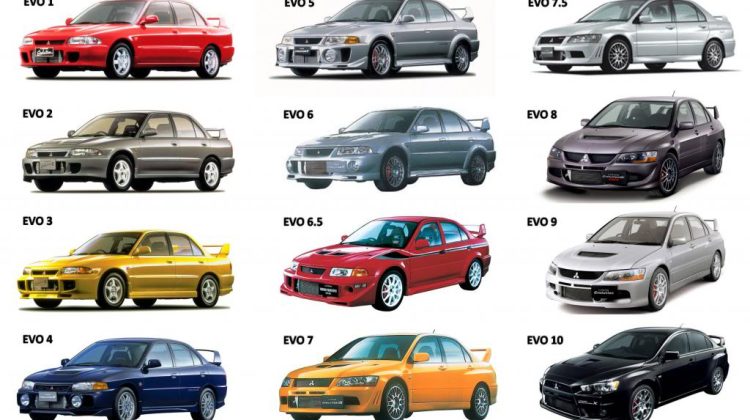

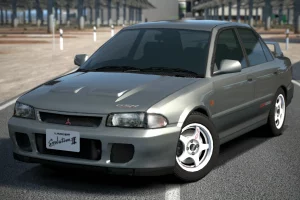
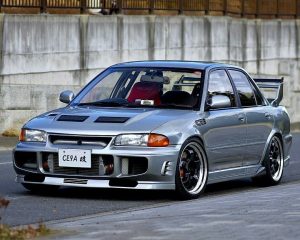
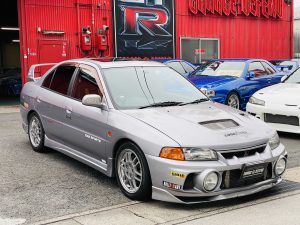

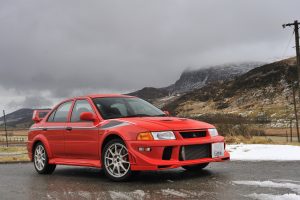
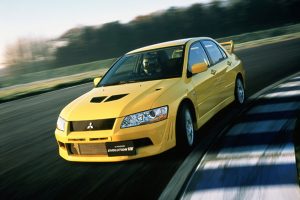
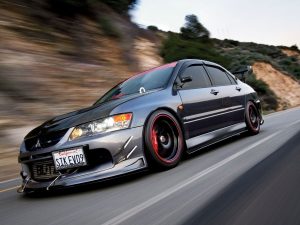
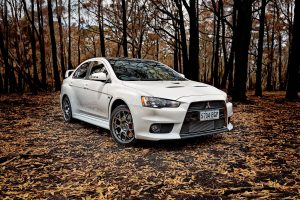


Best one. I have been looking for Mitsubishi lancer evo 2008.
You have written great article!
Experience Excellence with Bwer Pipes: Elevate your farming operations with Bwer Pipes’ industry-leading irrigation solutions. Our cutting-edge sprinkler technology and durable pipes are engineered for superior performance, enabling Iraqi farmers to achieve optimal water management, crop health, and productivity. Explore Bwer Pipes